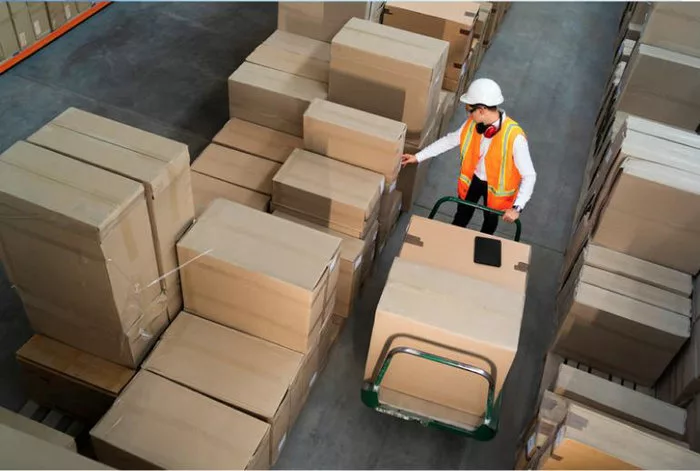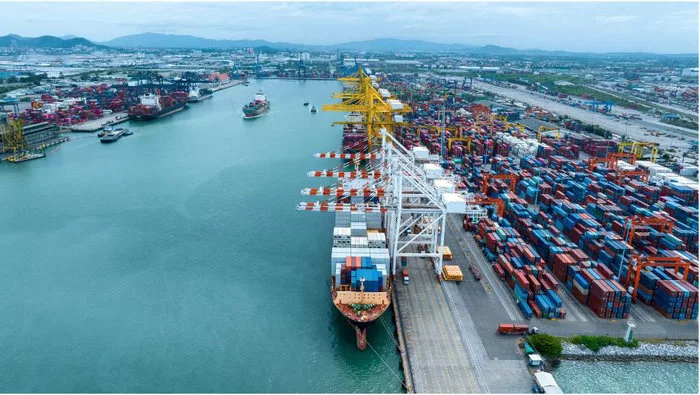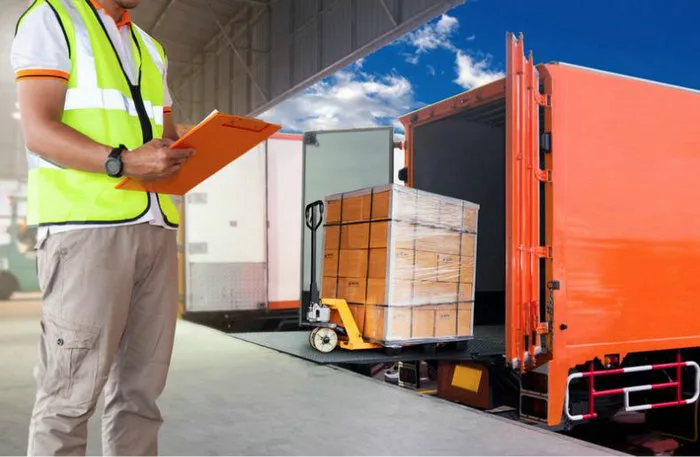
Shipping from China to Norway involves a complex network of logistical processes encompassing various modes of transport, including sea and air. When you’re looking to import from China to Norway, understanding the options available, estimated transit times, and the costs to ship your goods associated with each method is crucial. This process requires careful planning and coordination with suppliers, compliance with both countries’ import-export rules and regulations, and customs procedures.
To ensure a smooth shipping experience, you must take into account several factors. Selecting a reliable freight forwarder who understands the intricacies of the Sino-Norwegian trade route is essential. Equally important is your knowledge of the incoterms, or international commercial terms, which define the responsibilities of buyers and sellers in the international trade of goods. You must be familiar with customs duties, taxes, and any necessary documentation to facilitate the clearance process upon arrival in Norway.
By staying informed and preparing adequately, you can navigate the shipping process from China to Norway more effectively, ensuring that your goods arrive on time and within budget.
Key Takeaways
Shipping goods from China to Norway involves careful preparation and coordination across the export, international transport, and import/customs clearance stages.
Summary of process and considerations
Key steps in the overall China to Norway-shipping process include:
- Obtaining necessary export licenses and documentation
- Booking freight transport and selecting shipment mode
- Preparing essential shipping paperwork
- Managing customs clearance and release of goods
- Tracking cargo and taking delivery in Norway
Resources for shipping from China to Norway
There are various resources available with more details on the end-to-end process for importing goods from China:
- Norwegian Customs website
- International freight forwarders
Leveraging these information sources enables the creation of a smooth supply chain between China and Norway.
Preparing Goods for Export from China
Before shipping cargo from China to Norway, the export goods must be adequately prepared, including obtaining necessary export licenses and documentation, packing the shipment into containers, and more.
Pro forma invoice
A pro forma invoice is a crucial document needed when exporting goods from China. Details on the pro forma invoice when shipping to Norway include:
| Pro forma Invoice Information | Description |
|---|---|
| Parties | Exporter and importer business details |
| Export Items | Item name, Quantity, Unit price, Total item price |
| Costs | The sum of all items + shipping cost + insurance cost |
| Export terms and conditions | INCOTERM, shipment terms |
A proforma invoice serves as an estimate and is needed by the importer to prepare customs forms when goods reach Norway.
Packing and labeling
Proper packing and labeling helps ensure cargo security and integrity during global shipping and transport:
- Use strong export packaging suitable for overseas transport
- Pack goods into shipping containers to avoid damage/moisture
- Label boxes clearly with shipping labels indicating:
- Exporter/importer details
- Package weight/dimensions
- Special handling instructions
Following international export packing and labeling guidelines enables the cargo to reach its destination port in Norway safely.
Export licenses and restrictions
Certain goods may require export licenses and permits before being allowed to leave China:
- Restricted items – require approval from customs/government agencies
- Dangerous goods – subject to regulations for international transport
Restricted and Prohibited Items
Some items are restricted or prohibited from entering Norway, including:
- Narcotics and dangerous drugs
- Weapons and ammunition
- Products with endangered species
Checking China’s export regulations and whether the shipped goods need specific licenses or permits prevents customs delays departing China or entering Norway.
Arranging Logistics from China to Norway
Properly arranging the logistics and freight transport from the origin in China to the destination port in Norway is critical for the efficient shipping of goods between the two countries.
Choosing shipping method (air/ocean)
Ocean and air shipping are two main ways to transport cargo from China to Norway.
Sea Freight Options

Shipping via sea is the most common and cheapest method for large volumes of goods. The primary sea routes from China to Norway usually originate from major Chinese ports such as Shanghai, Shenzhen, or Ningbo. Your goods typically transit through the Suez Canal and proceed towards ports like Oslo, Bergen, or other appointed Norwegian destinations. Transit time for ocean shipping can vary, commonly ranging from 30 to 45 days, depending on the specific origin and destination ports, as well as the shipping line used.
Key sea freight shipping options include:
- FCL shipping (Full Container Load): You buy space for a full container, which provides better protection for your goods and is cost-effective for larger shipments.
- LCL shipping (Less than Container Load): Suitable for smaller shipments, sharing container space with other consignors’ goods.
Air Freight Options

For more urgent shipments, you may opt for air transport. Main airports in China like Beijing Capital, Shanghai Pudong, or Guangzhou Baiyun handle the bulk of air cargo, transporting it to Norwegian airports like Oslo Gardermoen, Bergen Flesland, or others as per your business needs. Air freight from China to Norway has a much shorter transit time, commonly taking 3 to 5 days for the journey.
When considering air freight, bear in mind the following factors:
- Capacity and frequency of flights may affect scheduling and availability.
- Cost: Generally, it is more expensive than sea freight but with the benefit of speed.
By weighing these sea and air freight options, you can select the most appropriate shipping freight route to meet your specific transportation needs from China to Norway.
| Mode | Transit Time | Cost | Shipment Type |
|---|---|---|---|
| Air | 3-5 days | High | Smaller cargo |
| Ocean | 30-45 days | Low | Less than container load (LCL) or Full container load (FCL) |
Booking freight transport
Booking steps include:
- Get shipping quotes
- Select the carrier and confirm the price
- Prepare shipping documents
- Load cargo into transport units
Booking transport ahead of time secures cargo space on the vessel/airplane.
Customs Clearance Procedures in Norway
Navigating customs regulations and processes is essential when importing goods from non-EU countries like China into Norway.
Required import/shipping documents
Key documents needed for customs clearance when shipping cargo from China include:
- Commercial invoice – declares shipment details and values for customs
- Packing list – describes package contents for customs inspection
- Bill of lading – legal proof of cargo ownership
- Import declaration – submitted to clear goods through customs
Having adequately prepared shipping paperwork facilitates rapid customs processing in Norway.
Paying duties and import VAT
Importing goods from non-EU countries like China into Norway requires paying:
- Customs duties – tax based on tariff codes
- Import VAT – value-added tax on imported goods
Duty and tax rates are based on:
- Product classification number
- Shipment value on commercial invoice
When shipping from China to Norway, you must understand the relevant tariffs and trade agreements that could affect your costs and legal obligations.
Norway is not a member of the European Union (EU) but is associated through its membership in the European Free Trade Association (EFTA). Despite this, it participates in the European Single Market through the European Economic Area (EEA) agreement. As a result, goods shipped from China to Norway are subject to the General System of Preferences (GSP), a trade program designed to promote economic development in developing countries.
The EU-Sino Agreement, indirectly affecting Norway, stipulates customs duties based on the product classification. The following table illustrates potential tariffs imposed on different categories:
| Product Category | Tariff Range |
|---|---|
| Electronics | 0% – 14% |
| Textiles | 4% – 12% |
| Agricultural | 5% – 17% |
| Industrial | 0% – 25% |
Note: These rates are subject to change, and specific goods might vary within these ranges.
For tariff exemptions or reductions, ensure your shipments comply with the Rules of Origin protocol established in trade agreements. Documentation proving the origin of the goods is crucial for these benefits and reduces the potential for customs delays.
To facilitate smoother transactions, familiarize yourself with Norway’s import declaration requirements and utilize tariff calculators for accurate cost estimations. This preparation will help avoid unexpected charges and ensure compliance with the necessary trade regulations.
Tracking and Receiving Shipment in Norway
Monitoring the shipping status and taking delivery of goods upon arrival in Norway completes the end-to-end import process.
Communicating with the shipping agent
The shipping agent handling the Norway freight should provide regular cargo status updates on the following:
- Export and departure from China
- International transit to Norway
- Customs clearance process
- Release from customs and delivery
Communication with the agent enables the importer to track shipment progress and prepare for receiving goods.
Monitoring status during transit
When you ship goods from China to Norway, staying updated on the whereabouts of your shipment is crucial. Your ability to track your cargo is enhanced by modern logistics technology. Here’s how it works:
- Real-Time Tracking: You can monitor your shipment in real-time. This system uses GPS technology to provide precise location updates.
- Automated Notifications: You receive automatic updates via email or SMS, alerting you to shipment status changes.
| Tracking Feature | Benefit to You |
|---|---|
| Real-Time Location | Know the exact whereabouts of your cargo |
| Estimated Time of Arrival (ETA) | Plan for receiving or distribution |
- Advanced Scanning: Each package is tagged with a barcode or RFID chip, which is scanned at various checkpoints, providing you with a detailed journey history.
Efficient technology optimizes logistics:
- Software Integration: Your supply chain software integrates with shipping services, making the flow of information seamless.
- Data Analytics: Use analytics to predict delays and optimize future shipping routes.
Your experience is enhanced with:
- Customer Service Portals: Access 24/7 online support and tracking tools.
- Mobile Apps: Download the carrier’s apps for updates on the go.
In summary, tracking and logistics technology empowers you with knowledge and control over your shipments from China to Norway, ensuring transparency and efficiency in the delivery process.
Clearing goods and delivery
Once customs formalities are complete, the shipment can be:
- Cleared out of the import customs facility
- Scheduled for final delivery to the importer’s location
- Received by staff to put away goods after checking for any damage
With proper customs clearance paperwork filed in advance, taking delivery of imported goods from China is streamlined for rapid availability in Norway.
In shipping from China to Norway, the efficiency of the final delivery and the effectiveness of the distribution centers and warehousing are critical to the seamless receipt of goods.
Last Mile Delivery in Norway
Efficiency is crucial for last-mile delivery in Norway. This is the phase where your goods reach their final destination. The Norwegian road infrastructure, challenging weather conditions, and remote areas can impact delivery times. Local delivery services often handle the last stretch, ensuring your package reaches you, even in the most secluded areas. You can typically track this part of the journey through the courier’s app or website, giving you a clear view of the arrival time.
Distribution Centers and Warehousing
For a streamlined supply chain, distribution centers, and warehousing play a pivotal role. In Norway, these facilities are strategically located to optimize the distribution process across the country. Major hubs are found in and around Oslo, where proximity to the largest consumer market and main ports is advantageous. Here’s a simple breakdown:
- Oslo Region:
- Prime location for access to southern and eastern Norway.
- Houses advanced warehousing solutions.
- Trondheim and Bergen:
- Serve the central and western parts of Norway.
- Equipped to handle both national and international shipments.
Opting for a warehouse that utilizes digital inventory management ensures accuracy in stock levels and facilitates quick dispatch. Quick transfers from distribution centers to local carriers are imperative to ensure your goods arrive on time and in good condition.
Why Choose Us? Luckystar Logistic

Established in 2022, Luckystar holds a prestigious position as a member of the Federal Maritime Commission (FMC) and functions as a Non-Vessel Operating Common Carrier (NVOCC). With a primary focus on serving China, the USA, Canada, and Europe, the company is dedicated to delivering superior service quality at reduced costs. Boasting a core team with over two decades of logistics experience, Luckystar brings significant expertise to the forefront. Since its inception, the company has been unwavering in its commitment to providing global door-to-door transport and logistics solutions, emphasizing dependability, adaptability, and responsiveness.
We help to:
- Arrange cargo transportation via air and ocean.
- Handle shipping documentation such as bills of lading, customs paperwork, certificates of origin, invoices, packing lists, etc.
- Coordinate customs clearance activities like duties/tax payments on the client’s behalf.
- Optimize logistics using our route knowledge and relationships to balance cost, speed, and reliability. We provide the best deal and freight forwarding service from China to Norway.
This article has hopefully given helpful information to help decide the optimal method for transporting goods from China to Norway. We aimed to outline critical considerations around shipping timeframes, costs, documentation needs, and more when moving cargo between the two countries. If there are any other questions or a need for more details on the end-to-end process, please reach out to us for further assistance. We aim to enable businesses to make informed freight mode selections and smoothly facilitate trade flows between China and Norway.
